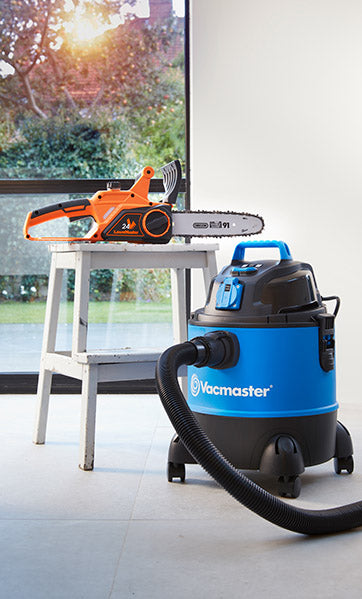-
Free Next Day Delivery
-
Buy Direct from the Makers
-
UK Customer Support
What is a Lawn Scarifier used for and when should it be used?
3 Min Read
- Buying Guide
Share

If you're looking to improve the health and appearance of your lawn, scarifying is an essential task to consider. This article covers the equipment you’ll need and the best time to undertake your lawn renovation project to ensure great results.
What is Scarifying?
Scarifying is a common lawn care technique that involves aerating the roots of your grass, removing thatch and moss, and stimulating fresh grass growth.
Over time, a layer of dead grass, roots, and debris – also known as thatch, can build up on your lawn, preventing water and nutrients from reaching the roots. This can result in poor soil quality and weak grass.
Scarifying helps solve this issue by thinning out the thatch and moss, allowing for better penetration of sunlight, water and essential nutrients, improving the health of your lawn.
When Should You Scarify?
The best times of the year to scarify your lawn are in the spring and autumn. These seasons offer milder weather, and the grass is actively growing, which gives it the best chance to recover.
Spring: Scarifying in the spring, once the grass has been mowed for 3-4 consecutive weeks, ensures that the grass has had time to establish itself and can tolerate the scarifying process. Aim for early to mid-spring when the temperatures are moderate, and the grass is actively growing.
Autumn: Autumn is another ideal time because it offers cooler temperatures and ample rainfall, promoting recovery and new root growth. Scarifying in autumn also helps prepare the lawn for the colder months, ensuring it's strong and healthy for the winter ahead.
Avoid scarifying during the summer, as high temperatures and dry conditions can stress your lawn. Similarly, winter scarifying should be avoided as the grass is dormant, and the ground may be too cold or frosty for scarifying.
Choosing the Right Tools:
To scarify your lawn effectively, you'll need the right tools. Some scarifiers, like the LawnMaster 1350W 33cm Scarifier & Rake, come with 2 attachments allowing you to choose the best one for your needs:
Tined Rake: The tined rake attachment is ideal for light scarifying. It works by raking the lawn’s surface, removing a small amount of thatch and moss. This is a gentler approach and is suitable for lawns with minimal build up.
Bladed Drum: For more intensive treatment, especially if your lawn has a heavy layer of moss or thatch, a bladed drum attachment is the best choice. The blades cut deep into the soil, removing thatch and moss more thoroughly. However, because it’s more aggressive, it should only be done once a year, either in early autumn or late spring when your lawn is actively growing.
Preparation and Aftercare
Proper preparation and aftercare are key to a successful scarifying session. Here's how to ensure the best results:
Preparation:
1) Water your lawn a couple of days before scarifying, but ensure the lawn is dry before scarifying. Damp grass can cause clumping and may lead to uneven results.
2) Mow the lawn before scarifying to a low height. This helps the scarifier penetrate the soil more effectively.
3) Remove any large debris from the lawn, such as sticks or rocks, to avoid damaging your scarifier.
4) If you don’t use a collection bag, make sure to rake up the debris left behind after scarifying.
Aftercare:
1) Seed any bare patches to promote even grass growth.
2) Water the lawn thoroughly after scarifying to ensure the soil stays moist as new roots begin to develop.
3) Make sure to keep freshly sown grass seed evenly moist for at least seven days after sowing. It can be helpful to cover the freshly sown seed with horticultural fleece, weighed down at the edges, to protect from unexpected low temperatures, birds and prevent drying out.
4) Avoid walking on the lawn as much as possible to prevent damaging the grass while it recovers.
Scarifying not only improves the health of your grass but also gives you a healthy lawn to enjoy. By choosing the right time and tools, preparing your lawn properly, and following up with the right aftercare, you can ensure your lawn thrives all year round.
